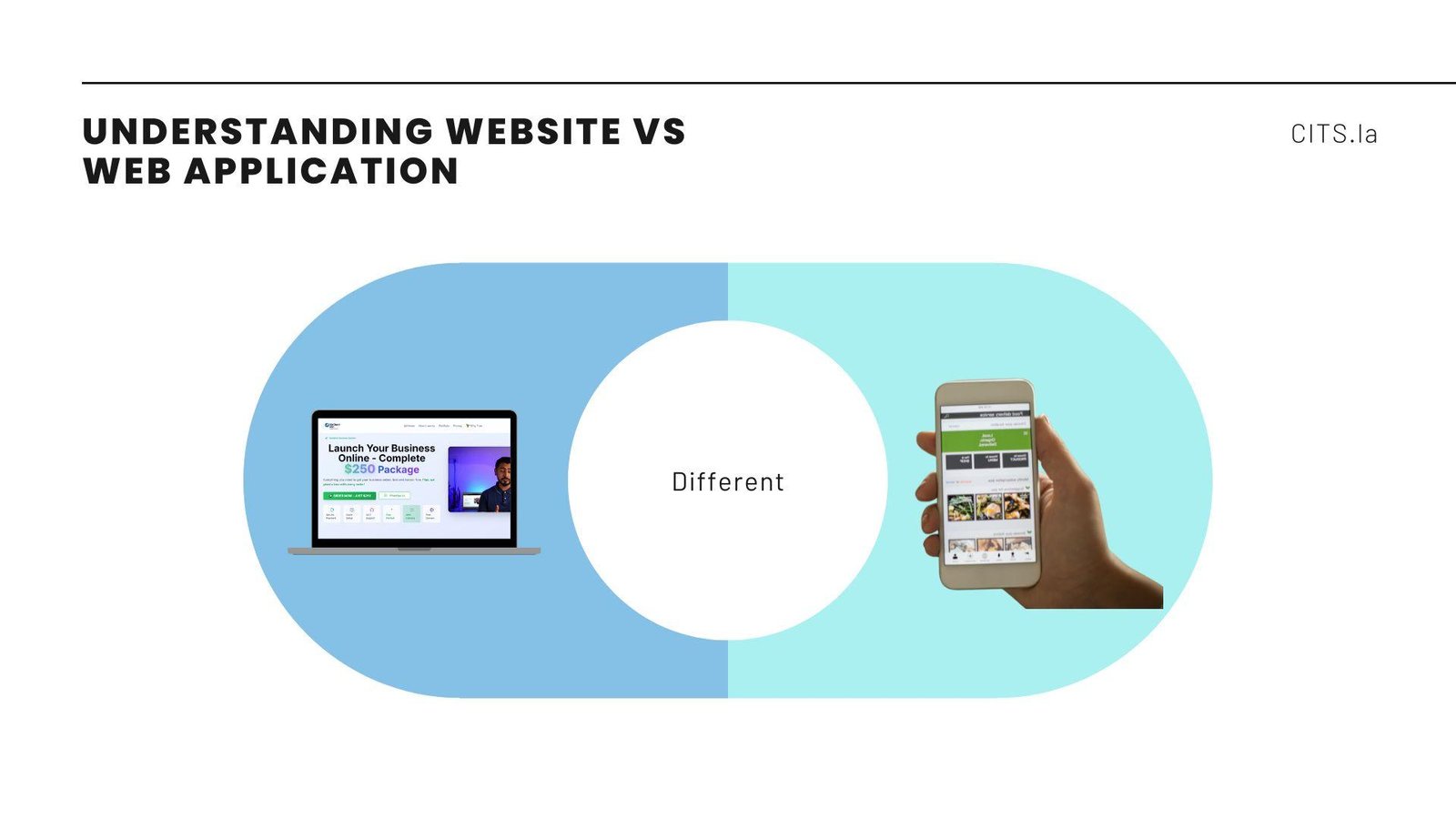No products in the cart.
Know the key differences between a website and a web application, their uses, and which option best fits your business needs in today’s digital world

In today’s digital-first world, every business in Laos — whether a start-up café in Vientiane or a growing logistics company in Savannakhet — needs a strong online presence. However, many business owners face a common question when planning their digital strategy: Should we build a website or a web application?
While these two terms are often used interchangeably, they are not the same. Each serves a different purpose, has unique features, and requires specific development approaches. Let’s break down the difference, explore their use cases, and see which one best suits your business.
A website is a collection of interlinked, static or dynamic pages accessible through a browser. Its primary goal is to provide information to visitors.
If your business needs to showcase services, share contact details, and communicate brand identity, a website is the right choice. It’s cost-effective, quick to develop, and ideal for building an online presence.
A web application is an interactive, software-like platform accessible through a browser. Unlike websites, web applications allow users to perform actions, manipulate data, and have personalized experiences.
If your business requires customer logins, data processing, or online transactions, a web application is the way forward. It provides advanced functionality and can integrate with other business systems.
For many businesses in Laos, the decision is not always one or the other. Some start with a simple website and gradually evolve into a full-featured web application as their operations and customer needs grow.
Understanding the difference between a website and a web application helps you make informed decisions for your business’s digital future. Whether you’re aiming for a professional online presence or an advanced customer portal, investing in the right solution will pay off in the long run.